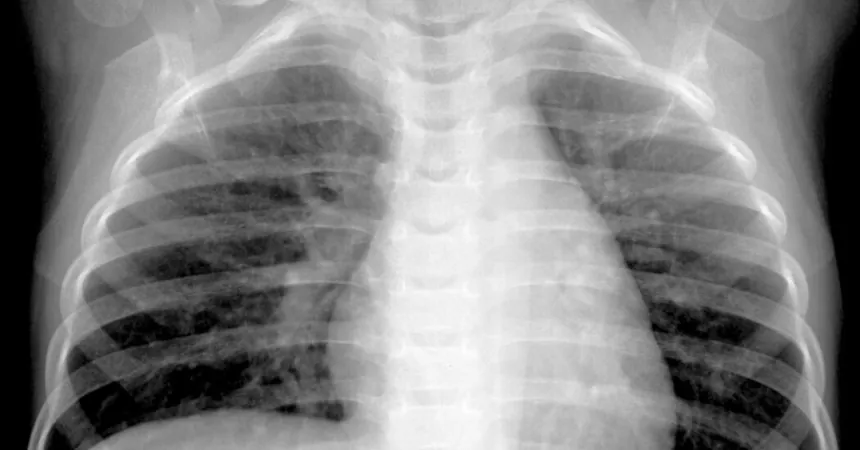
What You Need to Know About HMPV: The Respiratory Virus on the Rise in China
2025-01-09
Author: Ying
What is HMPV?
Human metapneumovirus, or HMPV, is a well-documented pathogen that contributes to respiratory illnesses globally. This virus is particularly common, with most people likely to be infected during their childhood, experiencing multiple bouts throughout their lives. Interestingly, HMPV exhibits seasonal patterns in colder climates similar to influenza, while in warmer regions, it can circulate year-round at lower levels.
HMPV shares similarities with respiratory syncytial virus (R.S.V.), causing symptoms akin to the flu and Covid-19, including cough, fever, nasal congestion, and wheezing. While most HMPV infections are mild, serious cases can lead to bronchitis or pneumonia, particularly affecting infants, the elderly, and individuals with weakened immune systems or pre-existing lung conditions.
Historical Context of HMPV
Discovered in 2001, HMPV has likely been circulating among humans for over 60 years. Its name may not be as widely recognized as that of influenza or Covid-19, primarily because the virus is often misidentified, with many cases not undergoing specific testing. This lack of attention is due to its clinical presentation closely mirroring other respiratory illnesses.
How is HMPV Transmitted?
The virus spreads in ways familiar to most: through respiratory droplets and aerosols from sneezes or coughs, direct contact with infected individuals, and contaminated surfaces, similar to how colds and the flu are contracted.
Vaccine and Treatment Options
Currently, no specific vaccine exists for HMPV, although researchers are developing an R.S.V. vaccine that may provide protection against both viruses. Treatment for HMPV focuses on managing symptoms rather than using antiviral medications.
China's Stance on the Situation
Chinese health officials acknowledge the rising HMPV cases, particularly among children, emphasizing that it is a known pathogen and currently not a significant threat. According to Kan Biao from China’s Center for Disease Control and Prevention, the increase is especially notable in northern regions, with the potential for further spikes during the upcoming Lunar New Year celebrations.
Public Awareness and Response
In response to the situation, Chinese state media is attempting to quell public fears and misinformation surrounding HMPV. Many residents are expressing surprise at finding out about HMPV, with some humorously suggesting they can finally put their pandemic stockpiles of masks to use again. On social media, discussions on flu season-related illnesses have become prevalent, indicating a general uptick in respiratory conditions.
The World Health Organization's Perspective
The World Health Organization has not expressed grave concerns over the rise in HMPV cases. Spokeswoman Dr. Margaret Harris indicated that this pattern of respiratory infections is typical during winter months in the Northern Hemisphere. WHO continues to monitor the situation closely, ensuring that Chinese health authorities communicate openly about outbreaks without overwhelming their healthcare systems.
Should You Be Worried?
While the current HMPV developments might stir memories of the early Covid-19 experience, the two situations are fundamentally different. HMPV is a well-studied virus, with established testing protocols and a broadly immunized population. Though a severe outbreak could challenge healthcare systems, particularly pediatric units, experts maintain that it’s unlikely to bring about a situation as critical as what was seen with Covid-19.
Experts urge Chinese authorities to provide timely epidemiological data to confirm HMPV's role in the current health landscape, alongside genomic data to rule out any concerning mutations.
Stay informed and prepared, but remember, managing respiratory health is always crucial, especially as seasonal illnesses circulate.



 Brasil (PT)
Brasil (PT)
 Canada (EN)
Canada (EN)
 Chile (ES)
Chile (ES)
 Česko (CS)
Česko (CS)
 대한민국 (KO)
대한민국 (KO)
 España (ES)
España (ES)
 France (FR)
France (FR)
 Hong Kong (EN)
Hong Kong (EN)
 Italia (IT)
Italia (IT)
 日本 (JA)
日本 (JA)
 Magyarország (HU)
Magyarország (HU)
 Norge (NO)
Norge (NO)
 Polska (PL)
Polska (PL)
 Schweiz (DE)
Schweiz (DE)
 Singapore (EN)
Singapore (EN)
 Sverige (SV)
Sverige (SV)
 Suomi (FI)
Suomi (FI)
 Türkiye (TR)
Türkiye (TR)
 الإمارات العربية المتحدة (AR)
الإمارات العربية المتحدة (AR)